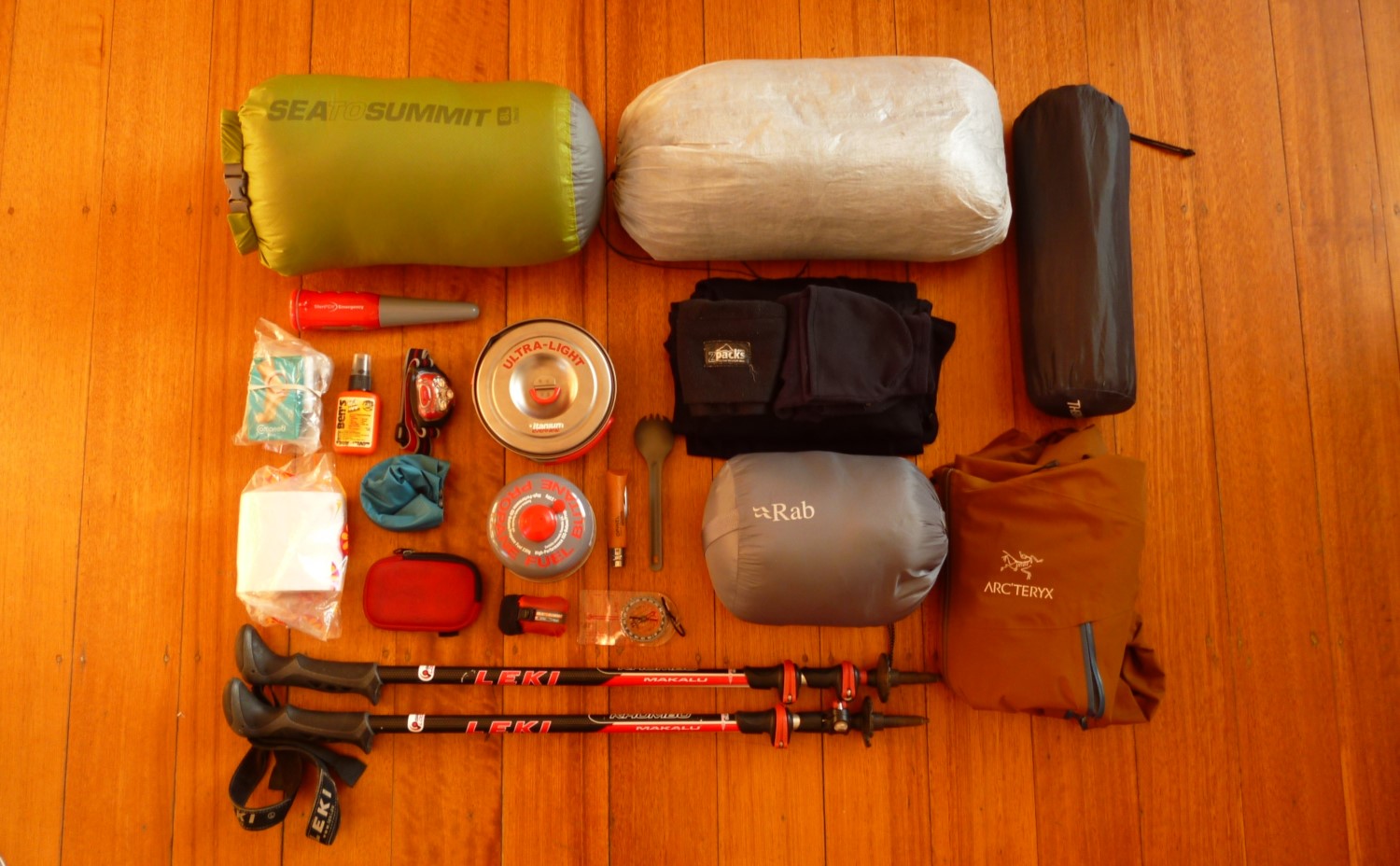Best Dive Watches Under $1000 of 2023
JUMP TO: LONGINES HYDROCONQUEST / BULOVA SEA KING / SEIKO SKX007K / CASIO G-SHOCK FROGMAN / CITIZEN ECO-DRIVE PROMASTER DIVER / BUYING ADVICE
Author: Rose Martin
The Short Version
Best Overall: Longines Hydroconquest
Best for Readability: Bulova Sea King
Best for Simplicity: Seiko SKX007K
Best for Durability: Casio G-Shock Frogman
Best on a Budget: Citizen Eco-Drive Promaster Diver
The Long Version
As we explained in our Best Dive Watches article, dive watches were an essential bit of gear back in the days when recreational diving was starting out. Just like ordinary watches, they display the time, and often the date, but they also come with a range of features that makes them suited to diving.
Nowadays, dive watches have been largely usurped by tech-heavy dive computers that not only tell the time, but also record, monitor, and display details about almost every aspect of your dive. Yet many people still like to don a dive watch for their underwater explorations because they’re so easy to use, make great backups in case your computer fails, and, of course, they add a touch of class to your scuba get-up.
All dive watches should have luminous hands and marking that can be read in dark conditions (like when you’re diving through a wreck), bezels that can be used to monitor the elapsed dive time, and, of course, a serious waterproof rating. But that’s where the similarities end.
Dive watches vary hugely when it comes to extra features, materials, and, crucially, price. Luxury dive watches can set you back thousands of dollars and are often manufactured by high-end watch companies, such as Rolex and Omega. On the flipside, there are some awesome budget options out there for as little as fifty bucks. They’ll work perfectly fine underwater, but they’ll typically lack some of the high-end features and wont’ be constructed from premium materials.
If luxury dive watches are out of your price range (and, let’s face it, for most of us they are!), but you don’t want to settle for bottom of the pile either, you’ll be pleased to know that there are heaps of dive watches out there for under $1,000. In fact, there are so many out there that finding the right one for you can be a little daunting, which is why we’ve put together this guide of the best ones around!
If you love reading this review of the best dive watches under $1000, then you'll likely love reading some of our other diving content:
Need To Know What To Look Out For?
Never bought a dive watch before? Not sure what all those technical terms mean? Make sure you check out our buying advice at the bottom of the page to get clued up before you buy one!
Best Overall: LONGINES HYDROCONQUEST
DIAMETER: 39 mm
MOVEMENT: Quartz L263
WATER RESISTANCE: 300 m
PRICE: $$$
PROS: Stylish yet durable, compact and lightweight, high-quality, great value for money
CONS: Expensive, not as easy to read as larger watches
If you’re after a watch that’s packed full of diving-friendly features, yet looks just like an ordinary watch, then look no further than the Longines Hydroquest.
The silvertone stainless steel construction, combined with a black-and-white dial, gives this watch an incredibly elegant appearance. What’s more, with a diameter of just 39mm, this compact watch sits on the wrist without getting caught in your sleeves or weighing you down.
Plus, despite the small diameter, you’ll have no problem reading this watch at a glance thanks to the large 6, 9, and 12 numbers on the dial as well as the striking color scheme. We also like the handy date display at the 3 o’clock position, and the quartz movement is known for its accuracy and quality.
The sleek, elegant appearance makes the Longines Hydroquest makes an awesome watch for formal occasions, but it doesn’t stop there – this watch also comes with heaps of high-end features that make it great for diving too. The unidirectional bezel features detailed markings that let you keep a close eye on your bottom time, and it’s constructed of durable, yet lightweight, ceramic. The hands and hour markings are filled with luminous material to aid readability in the dark, and the sapphire crystal protecting the dial is highly durable and scratch-resistant. And, of course, the Longines Hydroquest comes with a solid water-resistance rating of 300 meters.
Although this dive watch is the most expensive on our list, it’s so well suited to life on land and underwater that you’ll hardly ever have to take it off – so we reckon it’s worth it overall!
Best for Readability: BULOVA SEA KING
DIAMETER: 50 mm
MOVEMENT: Japanese quartz
WATER RESISTANCE: 300 m
PRICE: $$
PROS: Super easy to read, very precise movement, great for large wrists, 3-year warranty included
CONS: Slightly sporty appearance, bulky face
Hate wasting precious time underwater squinting at your dive watch? Then the Bulova Sea King could be just what you’re looking for.
The case diameter is a whopping 50mm which, combined with chunky markings and hands, makes it one of the clearest dials out there. What’s more, the hands and hour markings feature a generous luminous filling, as well as yellow accents set against a black background, for awesome readability even in poor light conditions.
The one-way bezel features continuous serrations for ease of use even when wearing gloves, and the watch performs excellently at depth thanks to the 300-meter water-resistance rating and reinforced crown. The highly specialized movement is incredibly precise (only straying a second or two annually), and there’s a convenient date display between the 4 and 5 o’clock markings.
In terms of style, this isn’t the most formal dive watch out there, but it doesn’t scream ‘sports watch’ either, so you can definitely get away with wearing it for all but the most formal of occasions. The large size does make this watch a tad bulky, which might put some people off, but it makes it a great option for people with slightly larger wrists.
Overall, the Bulova Sea King should a serious contender for anyone looking for a dive watch offering a a fantastic balance of precision, readability, and price – oh, a there’s a 3-year warranty included too.
Best for Simplicity: SEIKO SKX007K
DIAMETER: 42 mm
MOVEMENT: Seiko 7S26 Automatic
WATER RESISTANCE: 200 m
PRICE: $$
PROS: Easy to read, comfortable, good value for money
CONS: Rubber strap might not be to everyone’s taste, price has risen
Seiko took a no-frills approach when it came to designing the SKX007K, and the result is a highly dependable, easy-to-use dive watch that will last you for years to come.
With a diameter of 42 mm, and large white markings set against a black background, this watch is super easy to read. Yet despite this readability, the watch has retained a fairly sleek appearance and is lightweight too thanks to the rubber strap and slim design. The hands and markers need just 10 minutes of sunshine for them to glow for hours on end, and we love that the date display tells you the month as well as the date (which comes in super handy when it’s time to log your dives!).
The unidirectional bezel has detailed markings so you can closely monitor your time underwater, and it’s grooved the entire way around to maximize grip. Plus, we like that it makes an audible clicking sound when it’s set, so you know its firmly in place. The dial itself is protected with highly durable Hardlex crystal, and this watch comes with a water-resistance rating of 200 meters.
Although the rubber strap is incredibly comfortable, if you want to give this watch a more formal appearance, you ‘ll be pleased to know that it can easily be swapped out for a stainless steel one.
This watch has been on the market for some time and, although this speaks well of the its reputation, the price has risen since it first hit the market. Despite this, we think the Seiko SKX007K remains one of the most user-friendly watches out there and still offers great value for money overall.
Best for Durability: CASIO G-SHOCK FROGMAN
DIAMETER: 45 mm
MOVEMENT: Japanese Quartz
WATER RESISTANCE: 200 m
PRICE: $$
PROS: Highly durable, solar rechargeable battery, tide data and extra functions, long battery life
CONS: Bulky, might not suit everyone’s day-to-day style
All good dive watches should be able to handle some wear and tear, and the Casio G-Shock Frogman certainly excels in this department.
Reinforced with carbon-fiber resin, and designed to be highly shock-resistant, this watch can handle those inevitable bumps and scrapes that all dive gear has to endure. What’s more, the digital design gives the G-shock heaps of advantages over traditional analog dive watches.
For instance, you never have to worry about readability in poor conditions thanks to the LED backlight that illuminates automatically over time – pretty neat huh? The Frogman also comes with timer, stopwatch, and alarm functions, and it even measures your surface intervals between dives. Plus, it provides tidal information for sites around the globe, making it popular among surfers, freediver, anglers… and pretty much anyone who likes to spend time on the water. So, if you enjoy a range of watersports, this watch is a great shout.
We also love that this watch features a solar rechargeable battery, and a full blast of sun can keep it running for as long as 10 months without any additional exposure (and with constant exposure, you don’t have to worry about charge at all!). Although we’re big fans of the digital version, if you want durability without all the fancy features, there’s an analogue version available too that might be right up your street.
The sturdy construction does make this quite a bulky watch overall, and there’s no hiding the fact that it’s a sport watch rather than a formal watch… But, if you’re after a rugged dive watch that you can use for almost any watersport, then the Frogman will not disappoint.
Best on a Budget: CITIZEN ECO-DRIVE PROMASTER DIVER
DIAMETER: 43 mm
MOVEMENT: Citizen 3-hand E168
WATER RESISTANCE: 200 m
PRICE: $
PROS: Light-powered, awesome power reserve, 5-year warranty, great value for money
CONS: Slightly bulky, date can be hard to read, crystal could be better
And last, but by no means least, on our list is the Citizen Eco-Drive Promaster – a watch that’s as good for your wallet as it is for the environment.
Despite the surpringly low price tag, this watch comes fully equipped with all the features you’d expect to see in a dive watch, including a detailed one-way rotating bezel, luminous hands and dial markers, and, of course, a solid water-resistance rating of 200 meters.
But our favorite feature just has to be the eco-drive. Not sure what that means? Well, unlike most dive watches out there, this watch is fueled by a drive that harnesses light energy and converts it to energy that’s either used immediately or stored for later. A full charge can you give you enough juice for 6 months, and every time the power reserve dips you can top it up by simply exposing your watch to light. This means that the battery is constantly recharging, so you’ll never have to replace it – what a win!
The black-and-white dial, 43 mm diameter, and extra-large minute markings make this a very easy watch to read (although it might be a tad bulky for people with small wrists), and it’s stayed fairly slim despite the large case. The rubber strap is durable and comfortable (and won’t absorb any water) and can easily be swapped for another.
Granted, the mineral crystal could be upgraded, and you might want to upgrade the rubber strap for formal occasions, but, overall, this is one stylish, eco-friendly watch that offers great value for money – especially when you take the 5-year warranty into account!
BUYING ADVICE FOR DIVE WATCHES
Construction
SIZE: Dive watches come in a range of sizes. Faces with larger diameters can be easier to read, and there’s more space for extra touches like date displays and additional dials. On the flipside, larger faces add to the overall bulk and weight of the watch, which can put some people off wearing them for day-to-day activities, and it can ramp up the cost too because of the extra materials.
Ultimately, which size you like will come down to personal preference. But it’s a good idea to try out a few different sized watches before you order anything online, so you don’t end up with a horrible surprise.
MATERIALS: As they’re designed for use in salt water, dive watches must be constructed from anti-corrosive materials. Stainless steel is the most common materials used for the cases thanks to its excellent corrosion resistance, but gold is also used for some of the more luxurious watches, and ceramic is often used for the bezel because it’s tough and light.
Dive watches should also be strong enough to handle those inevitable bumps and scrapes that occur when you’re lugging your scuba gear around, so they feature thick crystals to protect them. Sapphire is the most scratch-resistant, but it’s also pretty expensive, and the more economical watches tend to use mineral or Hardlex crystals instead.
STRAP: Dive watch straps are typically constructed from stainless steel (to match the case) or some kind of rubber (especially the ‘sporty’ watches). You find leather and fabric straps out there too, but these generally aren’t considered as robust.
Many watches have straps you can swap too, so you could always wear your watch with a leather strap for day-to-day use then swap it out for a rubber strap for your diving holidays.
Display
ANALOGUE VS DIGITAL: In 1926, Rolex introduced the world’s first water-resistant watch – the ‘Oyster’. A few years later, Omega released the Omega Marine, the world’s first diving watch.
These analog watches inspired dive watches for years to come, and it wasn’t until 1972 that the digital watch was created. By the 1980s, dive computers were already beginning to take off, so there wasn’t much time for digital diving watches to thrive. This means that the vast majority of dive watches are analog and, inspired by those early creations, tend to be sleek and elegant.
Despite this, some digital watch manufacturers, like Casio, have branched out into the realm of waterproof watches suitable for diving, so there are a few digital dive watches on the market. They tend to be bulky and made of rubber, and embrace the typical sporty look rather than try to compete with the classics when it comes to old-school charm.
Both types of watch function perfectly well underwater, so the choice will ultimately come down to personal preference.
DEALING WITH DARKNESS: if you’re diving at depth on a cloudy day, things can get pretty dark. Plus, cave and wreck dives are often carried out in complete darkness. So, a dive watch needs to be readable even in the pitch black. Analog watches handle this by adding a luminous fill to the hands and minute markers, while digital watches use backlights instead.
SUBDIALS: Dive watches tend to have fewer subdials than regular watches, as they’re so small they’re difficult to read underwater, especially if the light is limited. Despite this, there are some dive watches on the market with subdials that provide additional functions, like tracking elapsed time or displaying a different time zone.
DATE DISPLAY: Many dive watches feature a date display in either the 3 or 6 o’clock positions. Some will show just the date, while others will include the day too. And some watches place a magnifier over the window so it can be read more easily.
Although a date display isn’t an essential feature when it comes to diving, many dive watches are designed to be worn for regular activities too, and a date display is a useful feature for watches designed to be worn on land as well as in the water.
Movement
The movement is the powerhouse of any watch, and they’re typically manual, automatic, or quartz.
MANUAL: Manual movements are entirely mechanical and require extremely careful craftsmanship, which is why they’re often the movement of choice for highly esteemed watchmakers. The energy from a wound spring is used to power the watch, and some require daily winding while others can operate for several days (depending on how big the power reserve is).
AUTOMATIC: Automatic movements are similar to manual ones when it comes to craftsmanship, but the spring is powered by wrist movement. This avoids the need for manual winding, unless you haven’t worn your watch for a while.
QAURTZ: Quartz movements use battery power to keep track of time, and they’re known for being the most accurate type of movement. Battery life varies, but they typically last anywhere from 10 to 24 months before they need changing. Nowadays, there are solar quartz watches on the market that can be recharged with sunlight, so the battery may never (or rarely) need replacing.
Other features
ROTATING BEZELS: When you’re on a dive, you want to be able to sit back and relax and not have to remember lots of pesky details, like what time you got in the water.
But it’s super important you know how long you’ve been diving… so, what’s the solution?
A rotating bezel of course!
Just before you descend, you rotate the bezel marker so it’s aligned with the minute hand. The hand will then move as the dive progresses, but the marker will stay put. This means you can tot up how many minutes have passed by counting the minutes between the bezel marker and the minute hand (most dive watches have 5-minute markings along the bezel to help with this).
The bezel 0-marker (and sometimes the other markers) will be luminous, just like the hand, so you can keep track of your dive time even in the dark. As a safety precaution, dive watch bezels only rotate in one direction (clockwise), this means that you can’t accidentally knock the bezel marker forwards during the dive, which would indicate that you’ve sent less time underwater than you really have.
HELIUM RELEASE/ESCAPE VALVE: This is a spring-loaded valve that can open manually or automatically, and allows helium to safely escape from the watch on ascent.
Watches with this feature are catered to saturation divers, who breathe in air mixtures containing a high concentration of helium at significant depths. Although dive watches keep out large molecules, like water, they’re unable to keep out helium because of its tiny molecular size, so it eventually makes its way inside the watch.
During ascent, decreases in atmospheric pressure cause gas that’s absorbed into the body tissues (and into the back of the watch) to diffuse back into the environment. Divers make decompression stops to allow gas to safely leave their body, and the helium escape valve does the same thing for the watch – it provides a passageway for helium to leave the watch without causing damage.
WATER RESISTANCE: Of course, all good dive watches need to be waterproof, and you’ll see that they all come with waterproof ratings – but what do they actually mean?
Well, the main thing to know is that a waterproof rating of, say, 30 meters, doesn’t mean that a watch can handle being submerged at that depth for extended periods of time.
Water-resistance ratings actually refer to how well a watch can stand up under pressure, and this changes with depth. So, if you’ll be diving at around 30 meters, don’t be fooled into thinking you’re okay with a watch with a 30 m waterproof rating.
Although you might get away with using a 100 meter-rated watch for diving, generally, the minimum rating you want is 200 meters, and most of the high-end dive watches offer a water-resistance rating of 300 meters.
ISO certification
One final thing you might come across when you’re shopping around for a new dive watch is the phrase ‘ISO-certified’ – so what’s this all about?
Basically, the International Organization for Standardization (hence ISO) outlined a series of standards that watches must meet in order to be technically deemed a dive watch. These standards include things like a waterproof rating of at least 100m, a unidirectional bezel, readability in the dark, and corrosion-, magnetic-, and shock-resistance.
It’s important to note that although the certification can indicate a high-quality dive watch, there are plenty of awesome dive watches out there that aren’t ISO-certified (like the Rolex dive watches). So, while it can be a useful indicator, don’t get too hung up on whether or not a watch is ISO-certified.
MORE INFORMATION
If you loved this gear review article, then you'll likely love getting submerged in our other underwater content:
Or check out our entire list of Gear Reviews, Knowledge Base Articles, or Destination Guides for more diving, snorkeling, and outdoors related content.





















